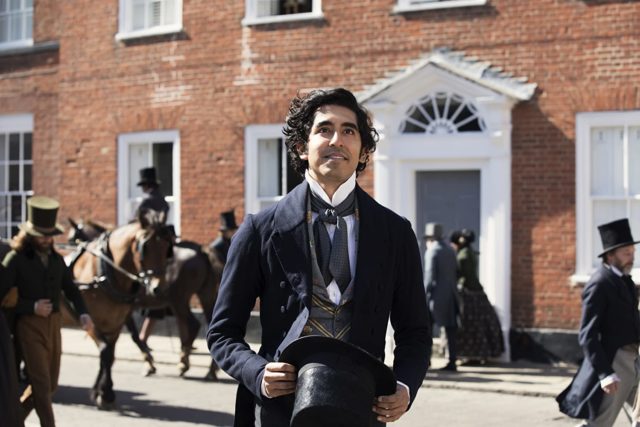
In 1850, Charles Dickens published his eighth novel, an autobiography of sorts, and his proclaimed favorite: The Personal History, Adventures, Experience and Observation of David Copperfield the Younger of Blunderstone Rookery (Which He Never Meant to Publish on Any Account). It was shortened to David Copperfield. Even the greats could stand a cut or two.
That’s one of the thrills of filmmaker Armando Iannucci’s The Personal History of David Copperfield: He takes Dickens’ 620-plus pages and distills it down to 120 minutes of tight, joyous storytelling.
Dev Patel stars as Copperfield. His name is a gift from his late father, a gift snatched from him by Edward Murdstone (Darren Boyd), a man Copperfield remembers as two eyebrows. Not that Mr. Murdstone doesn’t have eyes, it’s that the eyebrows are more important.
Personal History is littered with Copperfield’s illustrative phrases, the kind that makes magic the mundane: A boathouse — not a place to house boats or a boat with a house on it, but an overturned boat fashioned into a house. It’s where the lobster people live.
Iannucci retains the best, but gleeful kicks Dickens’ “whoms” to the curb. When a young Copperfield (Jairaj Varsani) tells the factory foreman he’s going to live with a man, “Whom I have yet to meet.” The kids rightfully ridicule him. “Whom?” One asks. “Where were you raised? Windsor Castle?”
Dickens used “whom” 120 times in his book. That’s 100 more occurrences than the word “donkey,” which looks as funny on the page as it sounds when Betsey Trotwood (Tilda Swinton) screeches it in frustration. Apparently, she and Mr. Dick (Hugh Laurie) live in the land of roaming donkeys.
The majority of Personal History takes place in London, a city in the state of becoming. The rise of industry has provided the rich with cheap labor, but it’s also offered the poor a chance to become something — as long as they catch a couple of breaks. Copperfield does, and he rises high: High enough to make the memories of poverty and squalor a distant memory. Maybe even a fabrication. Could he ever have been that hungry? Were Mr. Micawbre’s creditors so ruthless that they really pulled the rug out through the bottom crack of the front door? Maybe Copperfield is embellishing too much.
Maybe, but Iannucci shows how poverty is always around the corner — ready to take root and choke out all life and joy. Iannucci reveals these moments in dribs and drabs, never out of frame, but always on the edge. But once they come to the forefront, the world doesn’t feel as playful. It becomes, like one of the story’s more memorable characters, a woman who so hardened herself to the world, “She was now all edge.”
Fantasy is the artist’s weapon against that edge, even if that means massaging the truth. Dickens did that with his characters, and Iannucci does that with his casting — they resemble the racial makeup of today’s London much more than Dickens’ London.
But isn’t that why we tell stories in the first place? To put right all the things the world got wrong? “You could have made me younger and taller,” Mr. Peggotty (Paul Whitehouse) says to Copperfield. Would that it were so simple.
The Personal History of David Copperfield opens in theaters on Aug. 28.














